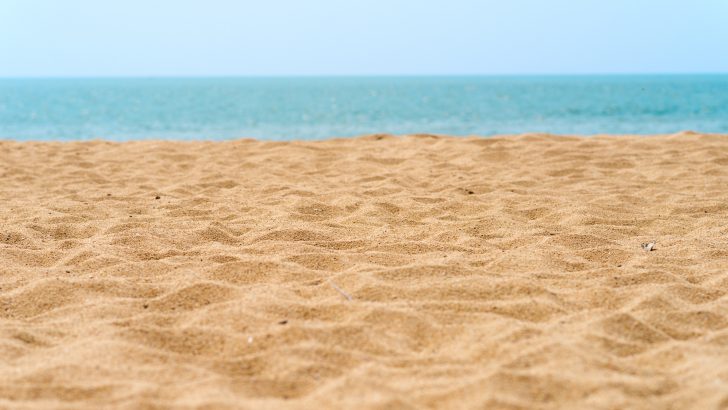Children’s Corner
Davis Clark
As we move deeper into summer, you may find yourself heading to the beach to catch a few rays before the season ends. While the ocean is certainly an opportunity to have fun, it can also provide the opportunity for learning. Playing with sand has always been a favourite activity for kids and it can be a great chance to practice some science.
Here are a few ways that kids can explore and perform experiments with sand, and add some learning to all that fun.
Many people never actually take a close look at sand. Bring a magnifying glass to the beach, and tell your kids to use it. From a distance, sand looks like it’s all one colour and one texture, but if you look closer, you’ll notice that all the individual grains of sand are different and unique. The sand we walk on is made of an infinite variety of tiny particles. Tell your kids to look at them closely and describe what they see.
Sand is also interesting because it acts as both a solid and a liquid. If it’s left in a pile, then it appears to be a solid, but if it’s poured it almost looks like a liquid! This fact can open the door to fun activities, like pouring sand out of holes of different sizes and seeing how fast it pours out. This can teach kids about science and the different properties of liquids, solids, and volumes.
Lesson
Sand is also great to build with, and your kids can get a mini-architecture lesson as well as an opportunity to express creativity. Building sandcastles is a great tradition, and experimenting with different structures is a great way to add science to that tradition.
Also, making sand wet changes the way it behaves. Wet sand is much stronger than dry sand because the particles stick together. Tell your kids to experiment with different levels of wet and dry sand, and different techniques like dripping.
Another way to take a closer look at the grains is to put a bit of sand in a bowl or container and shake it. The larger grains will naturally rise to the top when shaken. This is called the Brazilian Nut Effect, and it’s another great way for kids to explore sand and the beach.
If you look closely enough at sand, you can even see that some of it isn’t really sand. Bring a magnet with you to the beach, and let your kids run it over sand. It’s very likely that granules will stick onto it.
This is because there are little pieces of iron and other metals in sand. Letting the kids search through the sand themselves gives them the opportunity to explore their environment and see the complexity and variety in even the smallest things around them.



